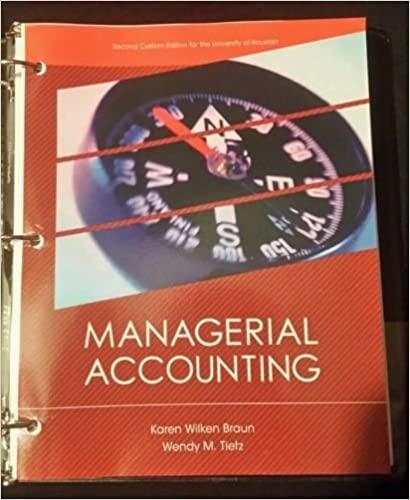Answered step by step
Verified Expert Solution
Question
1 Approved Answer
Karlan, D , R Osei, I Osei - Akoto and C Udry ( 2 0 1 4 ) , Agricultural decisions after relaxing credit and
Karlan, D R Osei, I OseiAkoto and C Udry Agricultural decisions after relaxing credit and risk constraints The Quarterly Journal of Economics :
To compare cash grants with free insurance, it would be desirable if the expected cost of the two interventions would be the same. How would you assess this? Is this the case for the Year free insurance and cash grant?
What is base risk in this context? What are the sources of base risk? What is the implication of a high base risk?
On page the authors present the theory result: As long as the demand for insurance is positive, access to the insurance market implies a neoclassical separation results in which investment in the risky and hedging inputs is independent of farmer preferences and wealth. Provide the intuition behind this result.
Table IV shows heterogenous treatment effects with respect to wealth. How would you expect these vary, and do the results confirm your expectations?
From p : The income effect interpretation, however, is not consistent with the finding that capital grants in ones social network increase insurance demand: unobserved transfers should reduce insurance demand. Why? I think they mean transfers to others in network, rather than unobserved.Modeling the Demand for Insurance and Investment
In years two and three, we provided access to insurance at randomized prices for a random set of
farmers. In year two, this insurance pricing experiment was crossed with the capital grants experiment
The empirical results above lead us to focus the model on an environment in which farmers are not
confronted with binding credit constraints but do face incomplete insurance. The second part of the
model in the appendix shows how farmers in such an environment respond to treatments of a access
to insurance at varying prices, b grants of capital and c their interaction.
First, we consider the demand for insurance and the average response of investment to access to
insurance and to capital grants. If the index insurance product has no basis risk, farmers with access to
actuarially fair insurance will fully insure and then invest in the risky and hedging inputs at the profit
maximizing level. At prices higher than actuarially fair, farmers will purchase less than full insurance,
invest less in the risky input and invest more in the hedging input. As long as the demand for insurance is
positive, access to the insurance market implies a neoclassical separation result in which investment in
the risky and hedging inputs is independent of farmer preferences and wealth. This implies that
investment is the same for those who receive a capital grant in addition to access to index insurance at a
given price as for those who only receive access to insurance. At higher prices of insurance, demand falls
to zero, at which point the separation result fails and the capital grant has the additional impact of
increasing decreasing investment in the risky hedging input. We discuss more in sections and
Second, we examine the heterogeneous treatment effect of access to insurance at varying prices. The
effect on investment of access to insurance for a given farmer varies with the insurance price: At higherTable IV: Reallocation of Investments
IV
Column includes sum of chemicals, land preparatory costs eg equipment rental, but not labor hired labor, and family labor valued at
gendercommunityyear specific wages Columns and regarding nonfarm income are derived from a survey question which asks if each
person in the household "spent the most time during the past months" and if so how many months on fishing, construction, working as a hired
agricultural laborer, working in nonfarm labor, selfemployed, employed in a household enterprise, or salaried regular employment. Harvest value
includes ownconsumed production, valued at communityspecific market value. All specifications include controls for full set of sample frame and year
interactions.

Step by Step Solution
There are 3 Steps involved in it
Step: 1

Get Instant Access to Expert-Tailored Solutions
See step-by-step solutions with expert insights and AI powered tools for academic success
Step: 2

Step: 3

Ace Your Homework with AI
Get the answers you need in no time with our AI-driven, step-by-step assistance
Get Started


